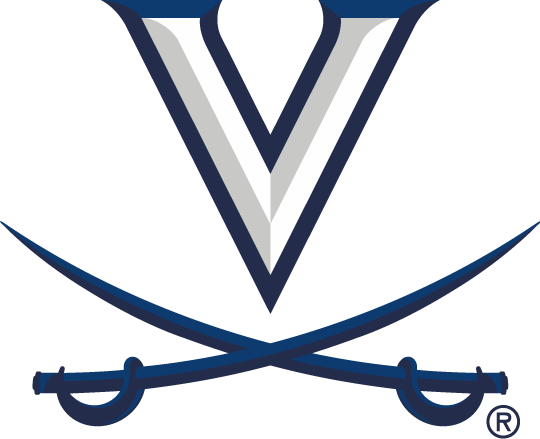UVa Football: Scott Stadium History
Story Links
Scott Stadium History
Entering its 81st season as the home for Virginia football, the Carl Smith Center, home of David A. Harrison III Field at Scott Stadium, with its unique architectural design, scenic setting on the University’s Grounds and exceptional sight lines, is one of the nation’s finest college football settings.
Opened in 1931, Scott Stadium might be one of the oldest campus college football stadiums in the nation, but you could never tell from its appearance. Numerous upgrades and expansions over the decade fine it a modern home for the Cavaliers and their fans.
Scott Stadium was the gift of Frederic William Scott and Elisabeth Strother Scott, and was dedicated to the memory of his parents, Frederic Robert Scott and Frances Branch Scott.
Virginia played its dedication game at Scott Stadium on Oct. 15, 1931 against the Virginia Military Institute before a then-capacity crowd of 22,000. Prior to that season, the Cavaliers staged their home games at the University’s Lambeth Field.
Since George Welsh’s 1987 squad went a perfect 5-0 at home, Scott Stadium has provided Virginia’s team a decided advantage. Over the past 24 seasons UVa’s home record stands at 108-38.
Virginia has played 415 games in the historic venue; Miami’s visit in 2008 marked the 400th game in the facility. UVa’s all-time record at Scott Stadium stands at 237-166-12.
Here are some of the significant changes and moments that have happened at Scott Stadium over the last 40 years:
• 1974 – New aluminum seating is installed along with an Astroturf playing surface. The facility’s brickwork is restored.
• 1980 – The stadium’s upper decks open adding 12,000 additional seats. A new press box-named in memory of longtime UVa athletic director Captain Norton Pritchett-and a President’s box are also constructed.
• Oct. 9, 1982 – Using portable lights, UVa plays its first night game at Scott Stadium against defending national champion Clemson.
• 1983 – A permanent lighting system is installed before the start of the season.
• 1985 – Bryant Hall, a dining and locker room facility located in the south end zone of the stadium, opens. The building is named in honor of J.C. Herbert Bryant, a 1932 Virginia graduate and one of the principal benefactors of the structure.
• Nov. 3, 1990 – A stadium-record crowd of 49,700 attends at No. 1 Virginia faces No. 16 Georgia Tech on a nationally televised game. The Yellow Jackets win 41-38.
• Sept. 2, 1995 – Virginia dedicates its new natural grass playing field – David A. Harrison III Field – at the first home game of the season against William & Mary. The field is named after David A. Harrison III of Hopewell, Va., who pledged $5 million to support the UVa football program. Harrison Field replaces artificial turf which was first installed at Scott Stadium in 1974.
• Nov. 2, 1995-Virginia hosts Florida State in the first-ever Thursday night game in Charlottesville. Playing in front of a sell-out crowd and a national television audience, the Cavaliers defeat the second-ranked Seminoles 33-28. Florida State becomes the highest-ranked team to ever fall to the Cavaliers.
• June 14, 1997 – Representing the largest single monetary gift in school history at that time, UVa alumnus and former Cavalier football player Carl W. Smith pledges $25 million to his alma mater. The University announces that the bulk of Smith’s gift-$23 million-will be used toward funding the expansion and enhancement of Scott Stadium, ultimately increasing its seating capacity to 61,500 by the year 2000.
• 1998 – Located in the north end of the stadium, the ‘Hoo Vision videoboard debuts for the Sept. 12 Maryland game. In conjunction with this project, the north end hillside seating area is moved 30 feet closer to the playing field
• 1999 – The lower level of the south bowl, including new locker rooms, is finished before the home opener vs. Wake Forest on Sept. 18.
• 2000 – The Carl Smith Center, home of David A. Harrison III Field, is dedicated during the 2000 season opener against Brigham Young on Sept. 2. The final phase of the stadium renovation project includes the completion of the Virginia Football Hall of Fame in the new Bryant Hall at the Carl Smith Center.
• 2001 – A crowd of 61,625 attends the home game vs. Virginia Tech, the largest attendance for a football game in Virginia state history at the time.
• 2003 – Video display panels, called “ribbon boards,” are installed below the upper decks on the east and west sides of the stadium.
• 2005 – The legendary rock band The Rolling Stones perform before a sold out crowd on Oct. 6.
• 2008 – A record-setting crowd of 64,947 attends the season opener vs. Southern California.
• 2009 – A new 32-foot by 57-foot videoboard replaces the existing 21-foot by 28-foot screen.

